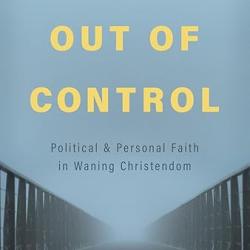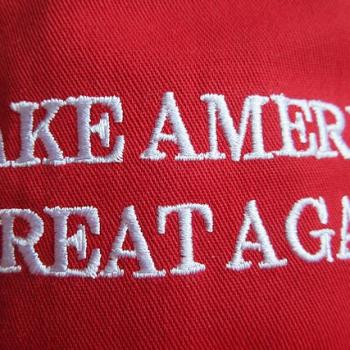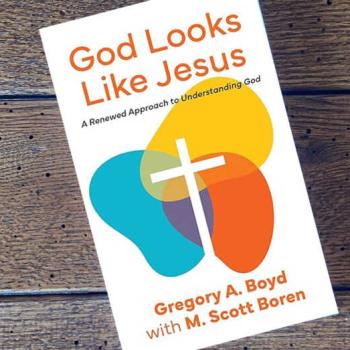Is there Vitality in “Mainline Religion?”
Yesterday (July 23, 2013) my colleague Philip Jenkins posted an article from The New York Times on his blog. The article is entitled “A Religious Legacy, with Its Leftward Tilt, Is Reconsidered.” (No URL was provided, so I’m not providing one here. Google the article or go to the NYT web site to read it.)
The gist of the article is that scholars and the media have focused so much attention on evangelical Christians in the past several decades that they have neglected “mainline religion” in America. The thesis of the article is that some scholars are arguing (rightly is implied) that it’s now time to re-focus attention on mainline religion, its history, theology, spirituality and political influence.
Here is a couple excerpts from the article that give a taste of its flavor:
“We now have quite a lot of good stuff on
evangelical Protestantism,” said David A.
Hollinger, an intellectual historian at the
University of California, Berkeley, who delivered
a provocative presidential address to the
Organization of American Historians in 2011,
defending the legacy of what he called ecumenical
Protestantism.
“But we ought to be studying the evangelicals,”
Mr. Holligner (sic) added, in “relation to the people
they hated.”
“Ecumenical Protestant” is here treated as synonymous with “mainline religion” and“liberal mainline Protestantism.” The article specifically mentions Methodists, Presbyterians, and Episcopalians as examples of this religious genre.
Not very subtly hidden within the article is a thesis put forward by some scholars of American religion: that mainline religion has had a significant impact on American culture, including politics, and that it still has much to offer. It almost sounds as if some scholars are experiencing a case of sour grapes because they identify with the so-called mainline of American religion (which usually means one of the “eight sisters”—ecumenical denominations that are perceived as forming a core of historically culturally influential Protestantism) and believe too much attention has been given to evangelicalism. What they may be overlooking, however, is that most of that media attention (and much of the scholarly attention as well) has been negative.
An underlying theme of the article and the scholarly speeches and articles it reports about is that American mainline religion, liberal, ecumenical Protestantism, still has vitality and deserves recognition for its historical and contemporary cultural and political influence.
Here I will respond to that theme and thesis—admittedly briefly. But first let me lay out some of my credentials for doing so. For much of my life I have existed and worked on the boundary between American evangelicalism and what the article is calling American mainline Protestantism. I attended an evangelical seminary and upon graduation joined an ABCUSA (American Baptist Churches, U.S.A.) church and received recognition of previous ordination there. I have identified myself most closely with the ABCUSA for decades and now with the Cooperative Baptist Fellowship. (I also identify through my church and professional affiliation with the Baptist General Convention of Texas which is by some counts the eighth largest denomination in the U.S. and definitely “mainline” in Texas!) The ABCUSA is definitely one of the “mainline” denominations in the U.S. It is one of the eight sisters. For three years I served as Minister of Youth and Christian Education in a United Presbyterian church (now part of the most definitely mainline Presbyterian Church, U.S.A.). I earned my Ph.D. in Religious Studies under mostly mainline scholars or religion and theologians in a secular university. I served as president of the very ecumenical and mainline-dominated American Theological Society (Midwest Division). I have written many articles and book reviews for Christian Century. I have been invited to speak at numerous mainline Protestant churches and events (most recently the “Ale and the Almighty” weekly theological symposium sponsored by an Episcopal church and held in a pub!).
I won’t trot out my evangelical credentials here. Anyone who knows anything about me knows them. I have been deeply embedded in American evangelicalism for decades and am a consulting editor of Christianity Today.
So, I feel at least moderately qualified to talk (write) about “mainline religion” (as defined in the NYT article).
Before attempting to say whether I think there is vitality in “mainline religion” please bear with me as I object to that label. Years ago Martin Marty, the “dean of American church historians,” published a column in The Christian Century in which he rightly called for a moratorium on that label and suggested instead “old line religion.” He rightly pointed out that “mainline” is a value-laden label and no longer really appropriate for describing the older, historic, Protestant denominations (the eight sisters). In much of America versions of evangelicalism and other religious genres far outweigh those denominations in numbers and influence.
Who ever decided to deny the Southern Baptist Convention the label “mainline?” In much of the U.S. it is the religious mainline—in terms of size and influence. Evangelicals are broken up into many more than eight main denominations, so it’s more difficult to lump them together than the ecumenical Protestant denominations that once all had offices in the so-called “God Box” building in New York City (now called the Interchurch Center). However, numerically evangelical Protestants outnumber actual adherents (faithful attenders and supporters) of the mainline denominations. And in Utah and adjacent counties of surrounding states, at least, Mormons outnumber everyone else.
So, having registered my objection to the label “mainline” for the religious genre the NYT article describes, what is my answer to whether what I (with Marty) will call old-line Protestantism has contemporary vitality?
Yes and no.
Beginning with “yes.” Nobody doubts that old line Protestantism was a major force in American culture and continues to be a powerful presence in certain segments of it. The whole idea of the conservative “Religious Right” phenomenon being somehow a violation of separation of church and state ignores the political power of old-line Protestantism in America from the days of the Social Gospel Movement through the 1950s. People like Washington Gladden, Harry Emerson Fosdick, Reinhold Niebuhr, Henry Sloane Coffin and William Sloane Coffin, Harvey Cox, and numerous other so-called “mainliners” were the thinkers and sometimes organizers of a powerful Religious Left in America for decades. Surely that legacy is not entirely dead, even if it is somewhat faded and submerged. It is primarily out of the old-line Protestantism that all forms of liberation theology have been born or kept alive in America. In fact, I would argue that liberation theologies (plural) are the new manifestation of the same impulse as the older Social Gospel Movement—motivated and energized by old-line Protestant (and Catholic) people.
Also, continuing the “yes,” there are within every old-line Protestant denomination power-house churches that show tremendous vitality. Many, perhaps most, of them are evangelical in ethos while shunning the fundamentalist side of evangelicalism. I have lived in quite a few American cities and have observed growing old-line denomination churches—some of them bursting at the seams. In almost every case they are charismatic or evangelical ethos-wise and exist in some tension with the hierarchy and especially the liberal theologians of their own denominations. The largest church in Iowa, for example, is a Lutheran (ELCA) congregation and it continues to grow beyond its capacities so that it is now forming satellite locations in its metro area. It is evangelical in ethos with revivalistic and semi-charismatic elements blended with its classical Lutheranism.
Now for the “no.” I think old-line Protestantism has submerged its vitality, leaving it mostly as potential, by means of the following errors.
First, by embracing inclusivism and pluralism old-line Protestantism convinced many of its own people and outsiders looking in that it lacked conviction—except perhaps with regard to “peace and justice” issues. But you can get those in many secular organizations. Why commit to a church for that alone? What do bells and smells (liturgy) have to do with peace and justice? Maybe something, but old-line Protestant denominations have not been good at explaining it. So what do I mean by “inclusivism” and “pluralism?” Here, anyway, inclusivism means the old-line churches’ open door policy that allows virtually anything. Not long ago I heard a well-known and influential old-line Protestant pastor speak and he spent most of his talk (to a college group) on Buddhism and how his spirituality has been energized by his “discovery” of a popular Japanese form of Buddhism. He argued that there is no conflict between that and his Christian faith. Most in the audience were not convinced. This is all too common in old-line Protestantism—syncretism, wild eclecticism, unfettered spiritual and theological experimentation. I believe this drives people away from the old-line denominations. And it saps their vitality by making their witness shallow and confused. By “pluralism” I mean the same—a tendency to allow virtually anything and even encourage wild diversity.
All that is to say, much of the vitality of old-line Protestantism has faded due to the loss of an adequate spiritual-theological center. Old-line Protestant denominations have absorbed one aspect of American culture so completely that it is killing them—tolerance. And here by “tolerance” I mean fear of objecting to anything except intolerance.
Second, old-line Protestantism has fallen out of step with most Americans in terms of religious, especially distinctively Christian, affections. The last time old-line Protestant denominations experienced a surge of vitality, an opportunity for real revitalization, it was the charismatic movement of the 1960s and 1970s. But, for the most part, the leaders turned their backs on it, relegating it to corners of their denominational life. They went out of their way to shun charismatics from leadership positions. They confined them to special interest groups within the denominations and then marginalized their voices, even treating them as fanatics and weirdos. This was a major mistake.
Rightly or wrongly, Americans seek experiences—even and perhaps especially in religion. They want to feel something, have a personal relationship with God that is transformative. Revivalism or at least “renewalism” is a major component of American religious life. Most old-line Protestant leaders shun that entirely unless its somehow related to African-American music and preaching or contemplative prayer (or meditation). But these and all emotional experiences are kept at arm’s length in most old-line denominations. They may be talked about, observed, briefly participated in, but they don’t permeate the fabric of old-line Protestant spirituality. And old-line Protestant churches have by-and-large missed the contemporary worship boat altogether and dug in their heels with traditional liturgy (at most tinkered with under the term “liturgical renewal”).
I well remember a “revival” at an ABCUSA church. The congregation built it up as a major renewal event. It fell absolutely flat and accomplished nothing discernible. I was on the Executive Council, so I was more than an observer. In advance of the revival I argued for lively worship and inspiring, convicting preaching. Instead, the congregation sang a few anthem-type hymns and heard a dry-as-dust sermon, read from a manuscript, about the importance of spiritual life. There was no invitation. Some revival. Typical old-line, though.
Now, if you jump back into the pre-Civil War era of old-line American religion you’ll find the same tensions there. The old-line denominations all had two “sides” or “schools”—one revivalistic and one anti-revivalistic (usually liturgical, sacramental and confessional). The revivalistic sides/schools grew; the anti-revivalistic went dormant. Before the Civil War the revivalistic groups within then old-line denominations were often very activist with regard to peace and justice issues. So there is no necessary conflict between revivalism/renewalism (“religious enthusiasm”) and leftward political ethics and activism. After the Civil War, however, the revivalistic groups within the old-line denominations began to separate out and form their own denominations (e.g., Nazarenes out of the Methodist Episcopal Church). The anti-revivalists within the old-line denominations captured them and ever since have tended to be extremely leery of revivalism or anything that looks or sounds like emotional religion.
By holding tightly to liturgical worship and refusing to update to be more in step with what especially younger Americans favor in worship (viz., “praise and worship” singing with bands, worship teams, etc.) they have missed out on a tremendous opportunity to revitalize. The few attempts I have observed in the old-line churches have been lame.
The one quotation in the NYT article that almost made me laugh was this one by the same scholar I quoted from the article at the beginning here:
“The focus on personal religious experience being
at the heart of religious life, which does come
out of liberal Christianity, seems to me alive
and well,” Mr. Hedstrom said.
Now, I’m sure Mr. Hedstrom is an excellent historian, a gentleman and scholar, but this claim is almost ludicrous—unless perhaps he’s referring to Friedrich Schleiermacher’s “God-consciousness” as “personal religious experience.” Even then, however, one has to ask Mr. Hedstrom about Pietism—the “heart religion” and “experiential Christianity” that predated Schleiermacher by a long way—going back to at least the late 1600s with the movement launched by Spener, Francke and Zinzendorf in Germany that spread to Great Britain and America. That can hardly be considered to have “come out of liberal Christianity!”
So what are my prescriptions for revitalizing old-line Protestantism? First, I suggest they rediscover generous orthodoxy (a good phrase coined, so far as I know, by Hans Frei) and enforce it within their denominations. Most of them have confessional statements that have been largely ignored or allowed to be used so flexibly that they are virtually meaningless. That’s because they contain doctrines that modern Christians cannot stomach (e.g., the double decree). I suggest separating those out and affirming (with teeth) basic, historic, broadly orthodox Christian doctrines such as the deity of Christ, his resurrection, the Trinity and salvation by grace alone through faith. The flip side of this is expelling leaders who join Buddhist sects (etc.).
Second, I suggest they rediscover and encourage living Christian spiritual experiences—conversion-regeneration by means of personal repentance and personal faith in Jesus Christ, sanctification through discipleship including infillings of the Holy Spirit, devotional life using Scripture and classical devotional literature.
Third, I suggest they discover blended worship with lively singing, worship teams and bands, and decrease their commitments to high liturgical worship as their sole style of worship.
Fourth, I suggest they rediscover the supernatural—belief in and experience of God actually answering prayers in ways beyond natural explanation—and encourage people to share their stories of that without embarrassment.
None of this requires any diminution of peace and justice activism; it just requires demoting peace and justice witness and activism from the be-all and end-all to one aspect of Christianity.












